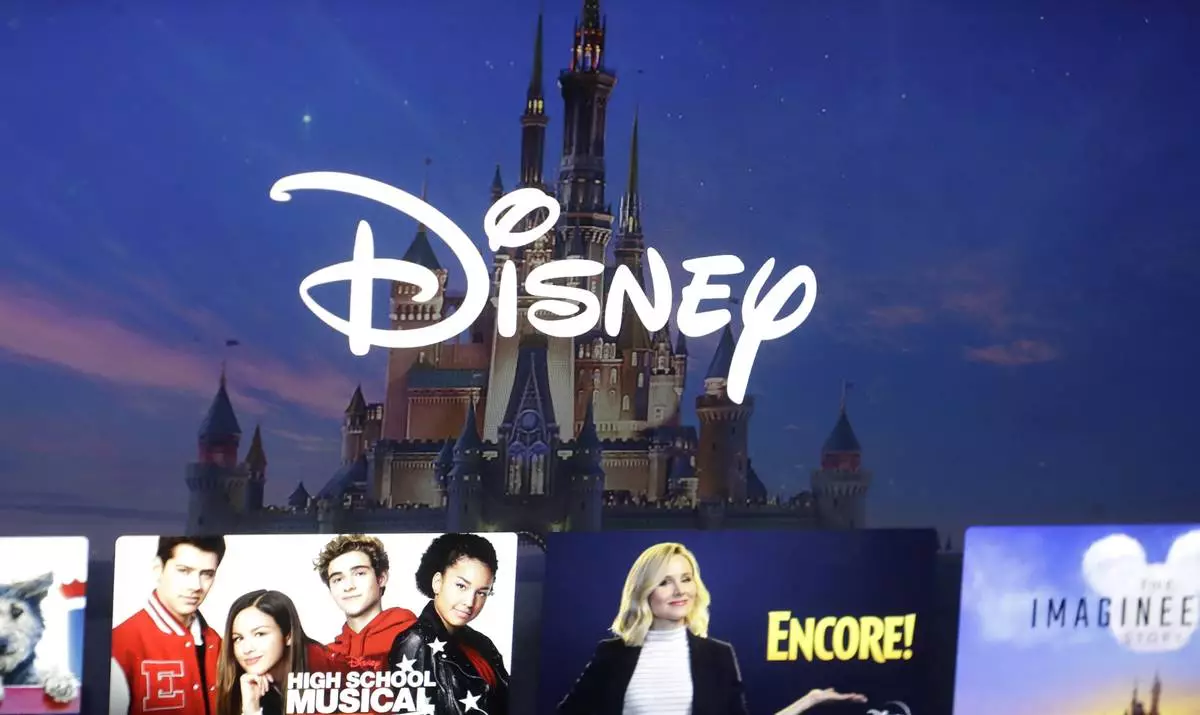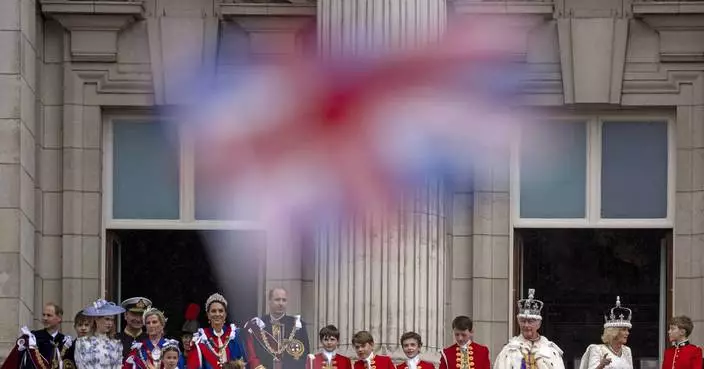The homeowner hid in a wardrobe as officers tried to find the suspect.
Police who surrounded a house in eastern Texas because they thought they had a burglary in progress found a deer instead.
The homeowner called Lufkin Police Department on Thursday after she heard glass breaking. She hid in a wardrobe and police tried to find the suspect in her home.
Posting a video of the incident on Facebook, Lufkin Police said: “Several officers arrived and formed an entry team. Upon making entry through the broken window, the lead officer rounded a corner and came face to face with one very frightened doe.”
An officer is heard shouting in the video: “It’s a deer! It’s a deer! It’s a deer!”
The video shows where the deer broke into the house’s front window and became trapped in the home. Officers were able to coax the animal out of the door.
Police assured residents that no animals or officers were seriously injured in the incident, although one officer was cut by broken glass.
The Walt Disney Co. swung to a loss in its second quarter because of restructuring and impairment charges, but its adjusted profit topped expectations and its streaming business turned a profit. Theme parks also continued to do well and the company boosted its outlook for the year.
While Disney said Tuesday that it foresees its overall streaming business softening in the current quarter due to its platform in India, Disney+Hotstar, it expects its combined streaming businesses to be profitable in the fourth quarter and to be a meaningful future growth driver for the company, with further improvements in profitability in fiscal 2025.
The direct-to-consumer business, which includes Disney+ and Hulu, posted quarterly operating income of $47 million compared with a loss of $587 million a year earlier. Revenue rose 13% to $5.64 billion.
For the combined streaming businesses, which includes Disney+, Hulu and ESPN+, second-quarter operating loss shrunk to $18 million from $659 million, while revenue improved to $6.19 billion from $5.51 billion.
Disney+ core subscribers climbed by more than 6% in the second quarter.
Yet the improved picture for Disney on streaming arrives with its cable business in decline. That segment saw revenue slide 8% in the most recent quarter.
“Looking at our company as a whole, it’s clear that the turnaround and growth initiatives we set in motion last year have continued to yield positive results,” CEO Bob Iger said in a prepared statement.
Speaking during Disney's conference call, Iger said that the company plans to add an ESPN tab to Disney+ by the end of the year, a maneuver that was previously made with Hulu. This will give U.S. subscribers access to some live sports and studio programming within the Disney+ app.
ESPN, Fox and Warner Bros. Discovery announced plans in February to launch a sports streaming platform in the fall that will include offerings from at least 15 networks and all four major professional sports leagues.
Iger also said that next month the company will start cracking down on password sharing for its streaming service in some markets, and will expand that crackdown globally in September.
While Disney has quality streaming content, Iger said that the company must now focus on building out its technology, similar to what rivals like Netflix have been doing. Those actions, including the password crackdown, are expected to improve profits.
It’s the first financial report since shareholders rebuffed efforts by activist investor Nelson Peltz to claim seats on the company board last month, standing firmly behind Iger as he tries to energize the company after a rough stretch.
Thomas Monteiro, senior analyst at Investing.com, said that some Disney investors may have been expecting more from the quarterly report, but that “the company has tilted its operation back to its core business model, which is more conservative by nature.”
Monteiro was focused on the company's efforts to turn its streaming division profitable.
“The big surprise of the day came on the streaming front, which finally managed to bring profits - way ahead of predictions - amid Hollywood’s massive strike period,” Monteiro said. "This indicates that perhaps the more global, low-production-cost Netflix-like model is probably the way to go in an operation that needs to rethink its growth expectations as a whole.”
Revenue at Disney's domestic theme parks rose 7%, while its theme parks overseas reported a 29% increase.
But Disney acknowledged wrestling with higher costs at its theme parks during the quarter due to inflation.
The company said that there was increased spending by guests at Walt Disney World due to higher ticket prices, while Disneyland guests boosted their spending due to an increase in ticket prices and hotel room rates.
Overseas, Hong Kong Disneyland benefited from the opening of World of Frozen, a section of the park that includes rides based on the popular “Frozen” movies, in November.
Similar to many tourist destinations, Disney is continuing to adjust to post-pandemic travel.
“While consumers continue to travel in record numbers, and we are still seeing healthy demand, we are seeing some evidence of a global moderation from peak post Covid travel,” Chief Financial Officer Hugh Johnston said during the call.
For the period ended March 30, Disney lost $20 million, or a penny per share. That compares with a profit of $1.27 billion, or 69 cents per share, a year ago.
Restructuring and impairment charges surged to $2.05 billion from $152 million in the prior-year period.
Adjusted earnings, which stripped out the charges and other items, were $1.21 per share, easily beating the $1.12 per share that analysts polled by Zacks Investment Research predicted.
Disney said that due to its second-quarter performance, it now has a full-year adjusted earnings per share growth target of 25%. It previously predicted growth of at least 20%.
The Burbank, California, company's revenue rose to $22.08 billion from $21.82 billion a year earlier, but was slightly lower than Wall Street estimates of $22.13 billion.
Content sales and licensing revenue tumbled 40% because Disney didn't release any significant movie titles during the second quarter as compared with the prior-year period, which included the release of “Ant-Man and the Wasp: Quantumania.” The year-ago results were also helped by the ongoing performance of "Avatar: The Way of Water," which was released in December 2022.
Shares fell more than 10% Tuesday.
In February The Walt Disney Co. said that it was making “significant cost reductions” and reduced its selling, general and other operations expenses by $500 million in its first quarter. The company cut thousands of jobs in 2023.
In March allies of Gov. Ron DeSantis and Disney reached a settlement agreement in a state court fight over how Walt Disney World is developed in the future following the takeover of the theme park resort’s government by the Florida governor.
Last month character performers at Disneyland in California and the union organizing them, Actors’ Equity Association, said they had filed a petition for union recognition.

FILE - A Disney logo forms part of a menu for the Disney Plus movie and entertainment streaming service on a computer screen in Walpole, Mass, Nov. 13, 2019. Walt Disney's moved to a loss in its second quarter, hampered by significantly higher restructuring and impairment charges, but its streaming business was profitable and theme parks continued to be a strength. While The Walt Disney Co. said Tuesday, May 7, 2024, that it foresees its streaming business softening in the third quarter due to Disney+Hotstar, it expects its combined streaming businesses to be profitable in the fourth quarter and to be a meaningful future growth driver for the company, with further improvements in profitability in fiscal 2025. (AP Photo/Steven Senne, File)










